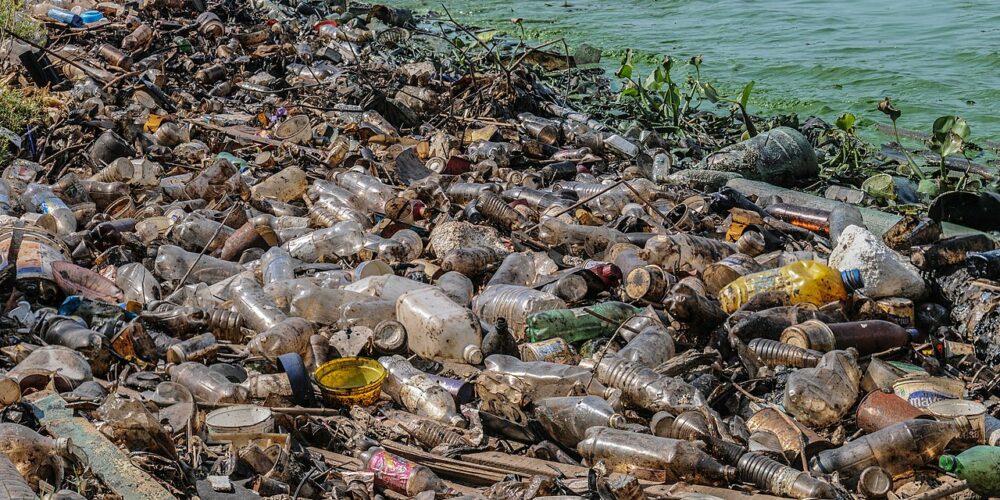Up to 2017, 8,300 million tonnes of virgin plastics have been produced, exceeding the quantity of almost all other human-made materials.
The production of plastics, and petrochemicals in general, like the testing of nuclear weapons, represents a qualitative shift in human relations with the earth. It has resulted in the spread of a host of mutagenic (causing genetic mutation), carcinogenic (causing cancer) and teratogenic (causing birth defects) chemicals, particularly harmful to life because they are not the product of evolutionary development over millions of years. Many of these harmful chemicals are characterised by bio-accumulation (concentration in individual organisms) and bio-magnification (concentration at higher levels in the food chain), representing increasingly pervasive threats to life.
Microplastics actively absorb carcinogenic persistent organic pollutants within the larger environment, making them more potent and toxic. Plastics are durable and resistant to degradation, properties that make these materials “difficult or impossible for nature to assimilate.” The omnipresent character of plastics in the earth system is evident in the massive plastic gyres (circulating patches of waste material) in the sea and by the existence of microplastic particles in nearly all organic life.
Writing more than sixty years ago, Rachel Carson in her seminal work Silent Spring (1962), said:
Sprays, dusts and aerosols are now applied almost universally to farms, gardens, forests and homes—non-selective chemicals that have the power to kill every insect, the “good” and the “bad,” to still the song of the birds and the leaping of fish in the streams, to coat the leaves with a deadly film and to linger on in the soil—all this though the intended target may be only a few weeds or insects.
One or two writers had previously suggested that modern pesticides posed dangers. We all know that, well before this, Marx and Engels saw all this going on in the mid to late nineteenth century and wrote extensively about it.
As you drive along the M50 motorway, as far as the eye can see there are these ugly cement barriers, costing approximately €400,000 per kilometre. “Current concrete bollards have a terrible carbon footprint, as each tonne of cement emits 900 kg of CO₂.” The state’s data centres have sought 1,000 MW of additional power in the space of twelve months, at a time when total energy demand in the 26 Counties is 5,500 MW. Eigrid has also called for a review of data centre policy and say the centres would represent up to a third of all our electricity consumption by 2030, based only on existing connectors.
However, a major barrier to environmental politics that takes history seriously is the persistent segregation of the environmental movement and the prevailing belief among mainstream environmentalists, especially in wealthy countries, that a reformed capitalism can solve these problems. Probably because they themselves are unlikely to bear the cost of these crises, too many environmentalists and policy-makers have failed to face the violence and injustice behind the environmental devastation now dispassionately reported by such organisations as the United Nations and the World Bank and many environmental NGOs.
Capital accumulation requires the continual expansion of the division of nature as well as the division of labour. The division of nature, however, is no longer a social division of nature, in which the earth’s different landscapes and species are used by human beings within a context that maintains the reproduction of nature itself: instead it is a detailed alienated division of nature that breaks the circle of natural processes, creating environmental rifts. Nature is remade in such a way as to promote a single end: the accumulation of capital, irrespective of the lessons of rational science and conditions of sustainability.
We have a job of work to do in highlighting the sheer task ahead of us, but what has gone before in terms of “protest” did not work. This is life or death, and the paradigm must change.






